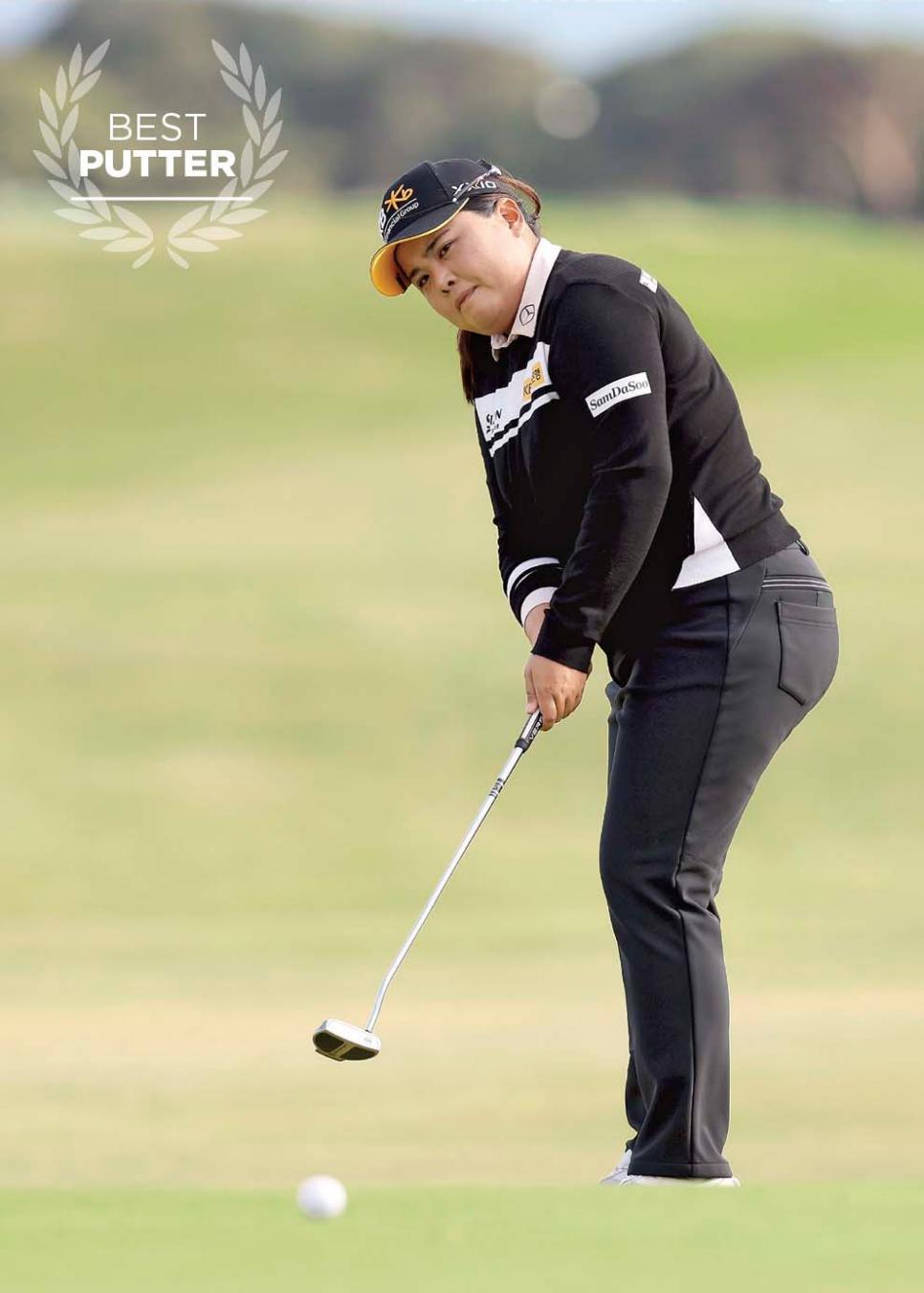[PHOTO: Dom Furore]
When examining just how good the golf is on the LPGA Tour, it’s likely you’ll notice how far Maria Fassi drives the ball or how many birdies Atthaya Thitikul makes in a round. On closer inspection, however, there’s also a lot of skill being demonstrated around the greens. To put it one way, many of these women wield wedges and putters with the dexterity of a major-championship trophy engraver.
With that in mind, Golf Digest sought to identify and honour the best of the best in various short-game skills on the LPGA Tour. To accomplish this, we sifted through scores of statistics, including new ones provided by KPMG Performance Insights, as well as enlisting the opinions of dozens of pros and their swing coaches (polled at recent tournaments). The result is honourees in six categories, led by six-time LPGA Tour winner Celine Boutier, plus honourable mentions. (It was a challenge to pick winners in many of these categories.)
From distance wedges to putting, from bunker play to touch, the following are the LPGA’s elite scramblers and what you can learn from them.
CELINE BOUTIER

During the 2023 season, Boutier won four times, including an impressive six-shot victory in the Amundi Evian Championship, her first major. What set this year apart? Among many statistical improvements, she jumped 129 spots in the LPGA stat of strokes gained/around the green. She also led the tour in scrambling – getting up and down better than two out three attempts – and ranked fifth in sand saves.
“My short game really took off when I began working with my current coach,” Boutier says of Texas-based Australian Cameron McCormick, who also works with the PGA Tour’s Jordan Spieth. “Cameron really helped improve my ability to read the lie and select the shot based on how the ball is sitting. We also focused on smoothing out my tempo, as I can get a little quick in my backswing.
“But by far the biggest adjustment in my short-game transformation was honing in my distance control – and it’s something amateurs should focus on.”
As you might expect, Boutier spends a lot of time on her short game, but she says the average amateur can improve in a lot less time if they adjust the way they practise. The key is to continually vary the goal. It can be selecting a new target from one ball to the next or trying to execute a different type of shot to the same target. The variance builds touch, especially for golfers who can’t get to the short-game area often.
“I’ll place tees or balls on the green to serve as targets or landing zones and then I try to land my shots at each target. I like this drill because I can get creative and land balls in the same spot with different trajectories to see how they react on the greens. Practising this way gives me a lot of insight into how to play from various spots on the course.”
Honourable mentions: Cheyenne Knight, Minjee Lee, Lydia Ko
MINJEE LEE
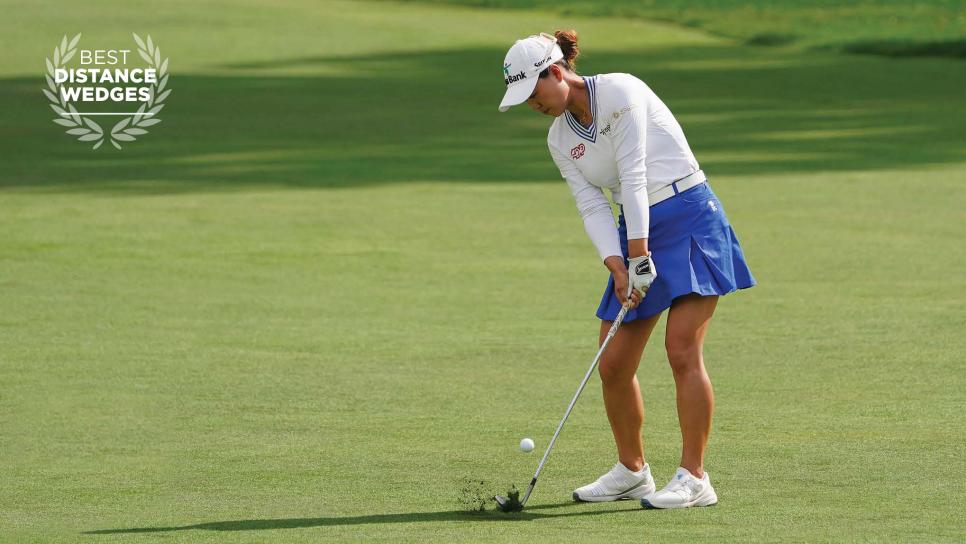
Australian star Minjee Lee topped the LPGA Tour for strokes gained/approach in each of the past two seasons, and is perennially among the best in the greens-in-regulation stat.
“I focus on maintaining a quiet lower half,” Lee says of her ability to consistently hit solid wedge shots. “That’s about as technical as I get.”
With distance wedges, Lee says she likes to put more pressure in her lead leg than she would for a full iron shot, and that pressure increases as she gets closer to the green. The reason? Weight shift isn’t nearly as important in shorter shots as it is when you’re swinging from further distances. The priority is making clean contact to control distance.
Her tip for you? “For consistency, use lower-lofted clubs into greens and shorten your swing,” she says. Also, make sure the clubface is square at impact. You’ll control direction, spin and trajectory much better.
Honourable mention: Jin Young Ko
CARLOTA CIGANDA
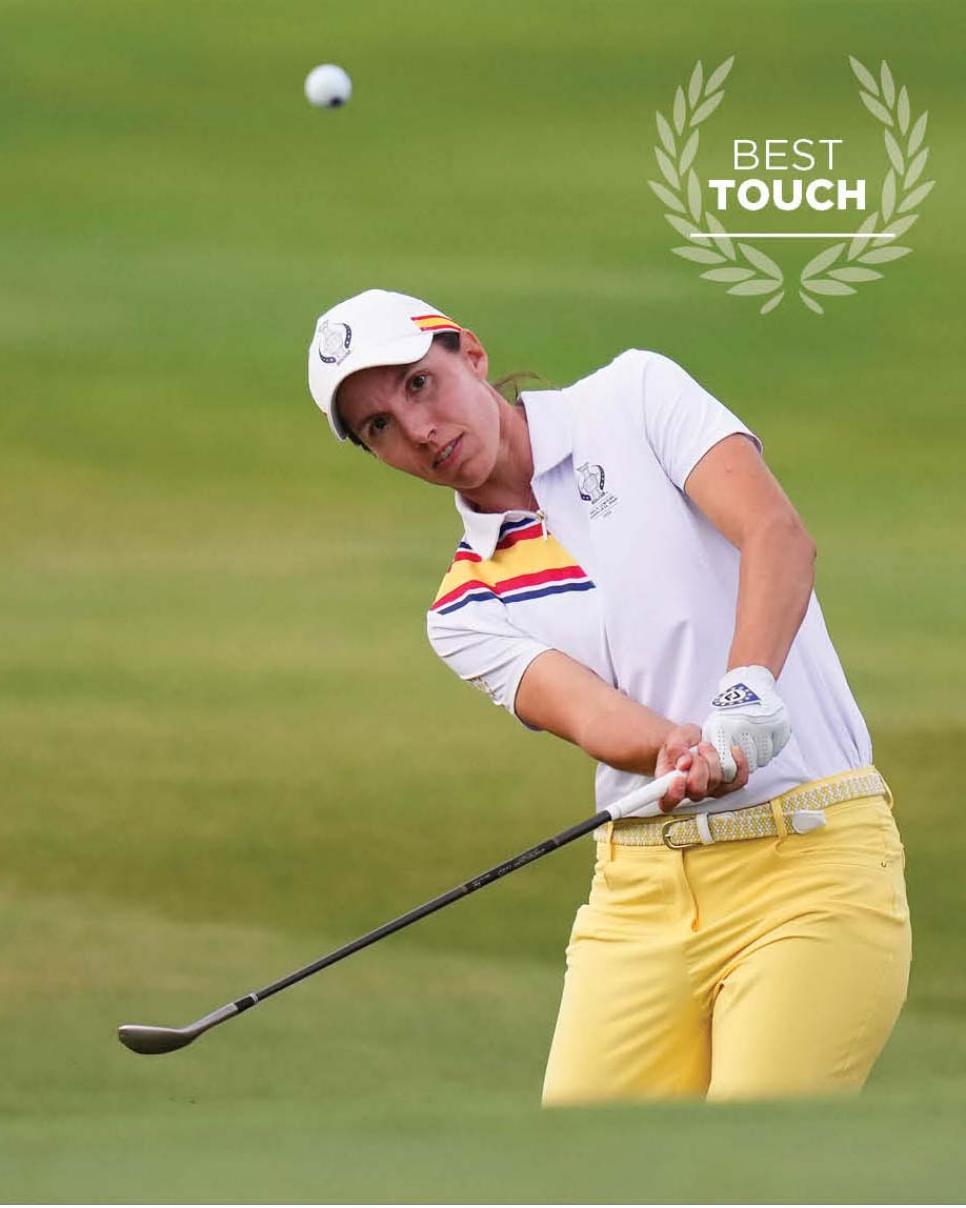
Carlota Ciganda’s touch is often mentioned by other tour players and caddies as being in the same area code as that of another famous Spaniard, the late Seve Ballesteros. Although humbled by the comparison, she says she’s more of a student than a professor of his technique, along with those of other great Spanish players.
“I’ve watched a lot of videos of Seve, Olazabal, Sergio and Rahm,” Ciganda says. “Like them, once I see the lie and the green, the shot I want to hit comes to me. I follow my instincts.”
Natural talent aside, Ciganda says you can’t truly tap into feel or touch without first having solid mechanics, and that’s where amateur golfers should start: “Having the technique clear in your mind is what gives you confidence – especially under pressure.”
Her basic technique is simple to copy, she says: start the club back mainly with your arms and hands, but swing through with a rotation of the body. The hands should remain fairly inactive in the through-swing until this motion becomes easy to repeat, then you can experiment with some hand-and-wrist action to alter what the ball does.
Honourable mentions: Ashleigh Buhai, Gabby Lopez, Leona Maguire Patty Tavatanikit, Ruoning (Ronnie) Yin.
DANIELLE KANG
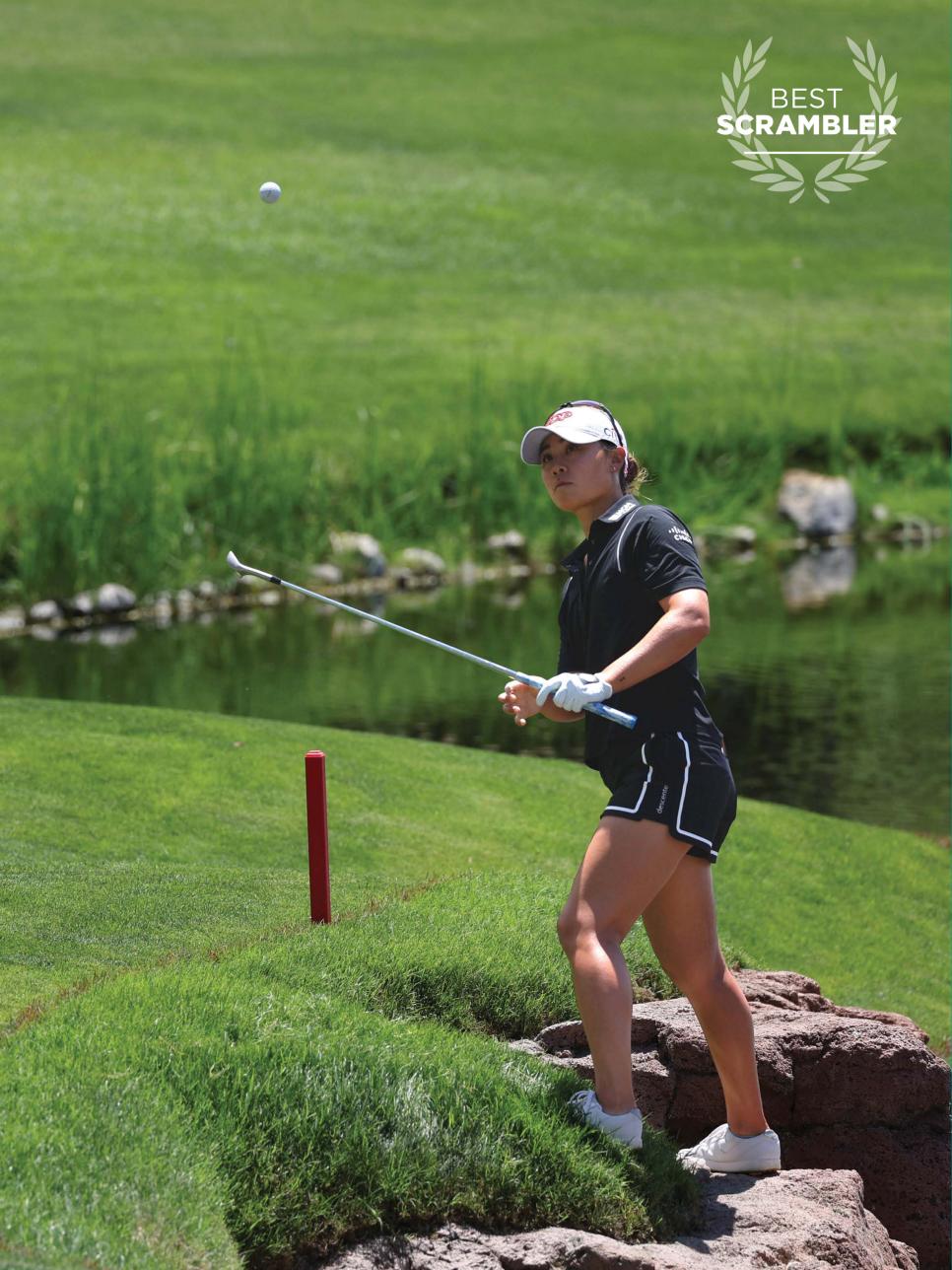
LYDIA KO
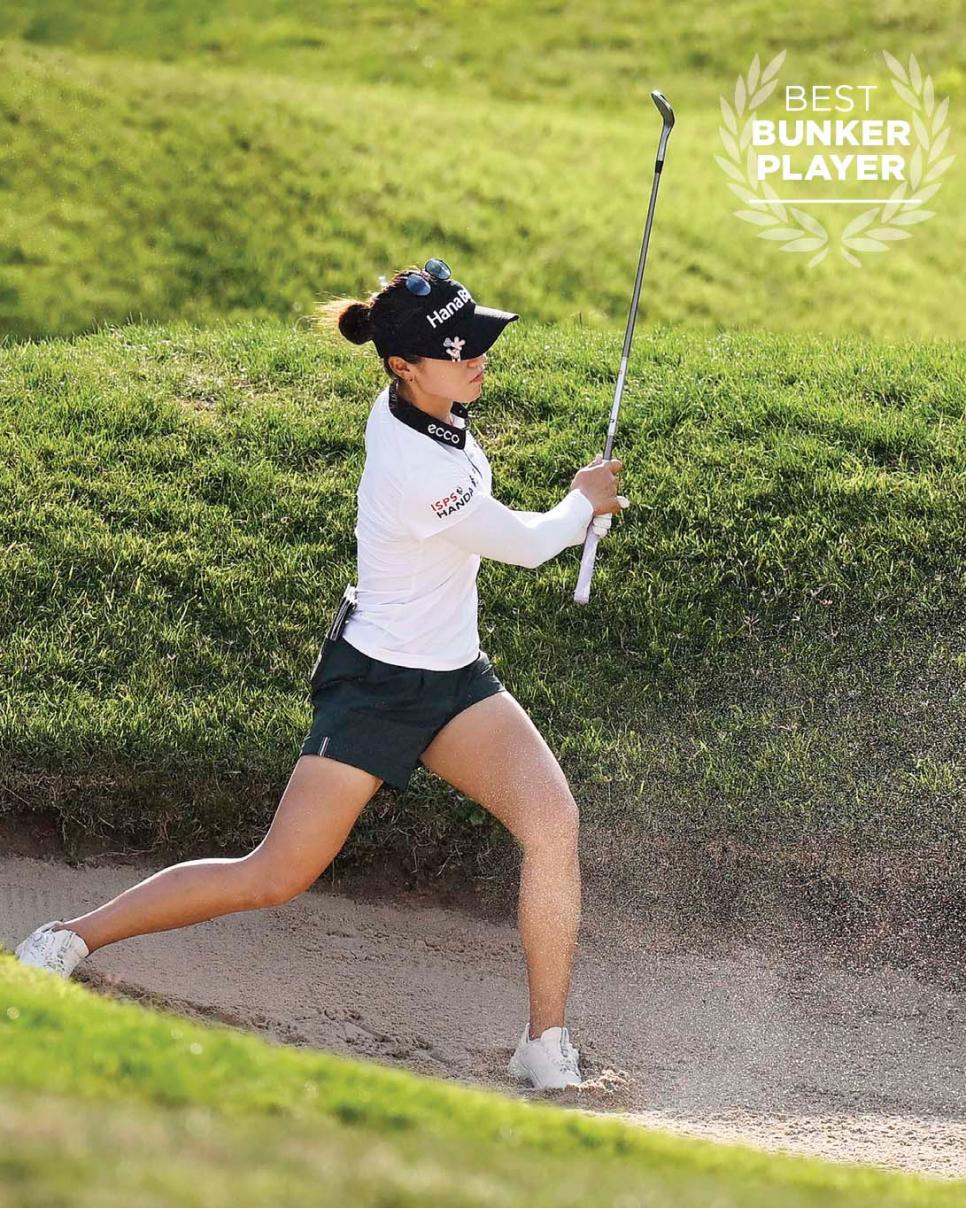
INBEE PARK
